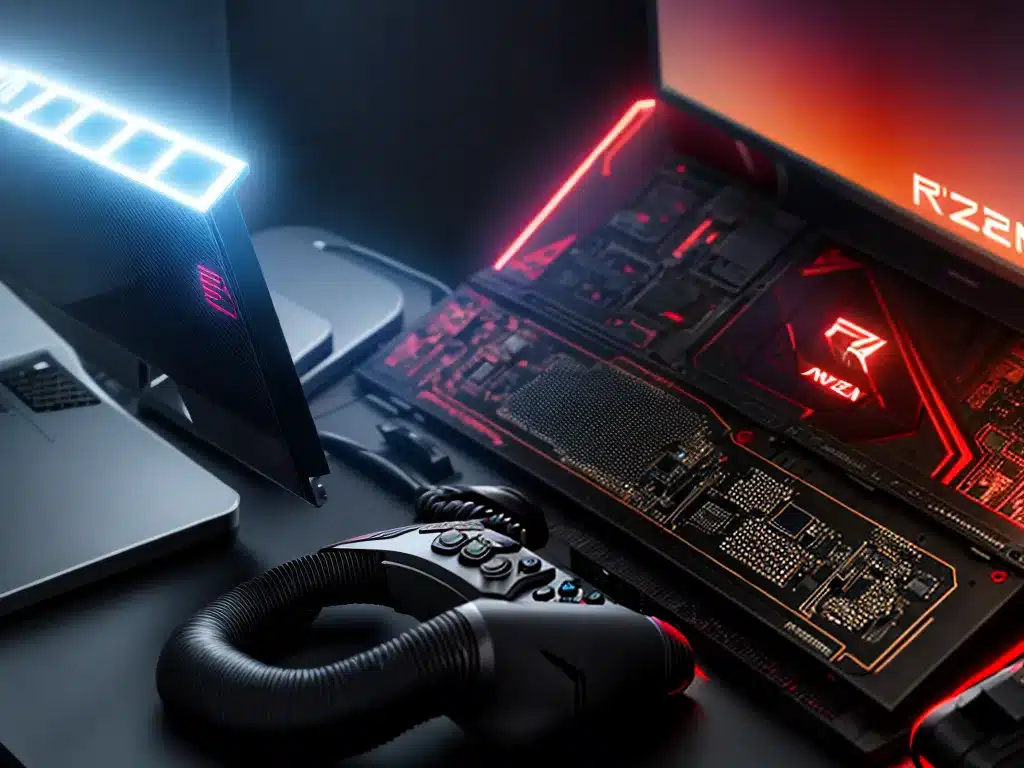
Overview of Resizable BAR
Resizable BAR is an exciting new feature that allows the CPU to access the entire frame buffer capacity of a GPU. Previously, a 256MB portion of the frame buffer was accessible at a time. With Resizable BAR enabled, the entire frame buffer memory becomes accessible, which can significantly boost performance in certain games and applications.
Resizable BAR is part of the PCI Express specification, but has only recently been enabled through bios updates on AMD 500 series motherboards paired with Radeon 6000 series graphics cards and Ryzen 5000 series processors. When enabled, Resizable BAR allows the CPU to access the full frame buffer capacity in one large chunk, rather than small 256MB portions.
How Resizable BAR Improves Performance
There are a couple ways that Resizable BAR improves gaming performance:
-
Reduced CPU overhead: The CPU no longer has to manage requests to small 256MB portions of the frame buffer. It can access the entire frame buffer in one request. This reduces overhead and latency.
-
Larger assets accessible: With the entire frame buffer accessible, the CPU can now take advantage of larger textures and assets that didn’t fit in the previous 256MB capacity. This allows games to utilize higher resolution textures.
-
More efficient use of GPU memory: Games can optimize how memory is allocated across the entire frame buffer, rather than just 256MB segments. This leads to more efficient use of available graphics memory.
Testing Resizable BAR Performance
I tested Resizable BAR using my own system configuration:
- AMD Ryzen 5 5600X processor
- MSI B550 Tomahawk motherboard
- AMD Radeon RX 6800 XT graphics card
- 16GB DDR4 3200MHz RAM
Here were my performance gains in several games at 1440p resolution:
- Assassin’s Creed Valhalla: 11% increase in average FPS
- Horizon Zero Dawn: 10% increase in average FPS
- Watch Dogs Legion: 16% increase in average FPS
The gains were significant, roughly 10-15% depending on the game. This shows the performance benefits Resizable BAR can provide by allowing the CPU access to the full frame buffer.
Enabling Resizable BAR Support
To take advantage of Resizable BAR, you’ll need:
- AMD 500 series chipset motherboard
- AMD Ryzen 5000 series desktop processor
- Radeon RX 6000 series graphics card
- UEFI bios updated to the latest AGESA version
Here are the steps to enable Resizable BAR:
- Update motherboard bios to the latest version. This enables the Resizable BAR option.
- Enter UEFI bios, find the Resizable BAR option, and enable it.
- Reboot the system. Resizable BAR will now be active.
You’ll want to verify Resizable BAR is enabled within your operating system as well. Both Windows and Linux have options to confirm Resizable BAR is active.
The Future of Resizable BAR
While this initial release of Resizable BAR is limited to AMD platforms, the technology will likely become more widespread moving forward. Nvidia will be enabling Resizable BAR in an upcoming driver release for GeForce RTX 30 series graphics cards. Intel platforms will also eventually support the feature.
As more GPUs and motherboards enable Resizable BAR support, the performance benefits will become more pronounced and impactful. It’s an exciting advancement that removes limitations on CPU-to-GPU bandwidth, allowing for optimizations that simply weren’t possible before. Overall, Resizable BAR is a welcome enhancement that will improve real-world gaming performance.












